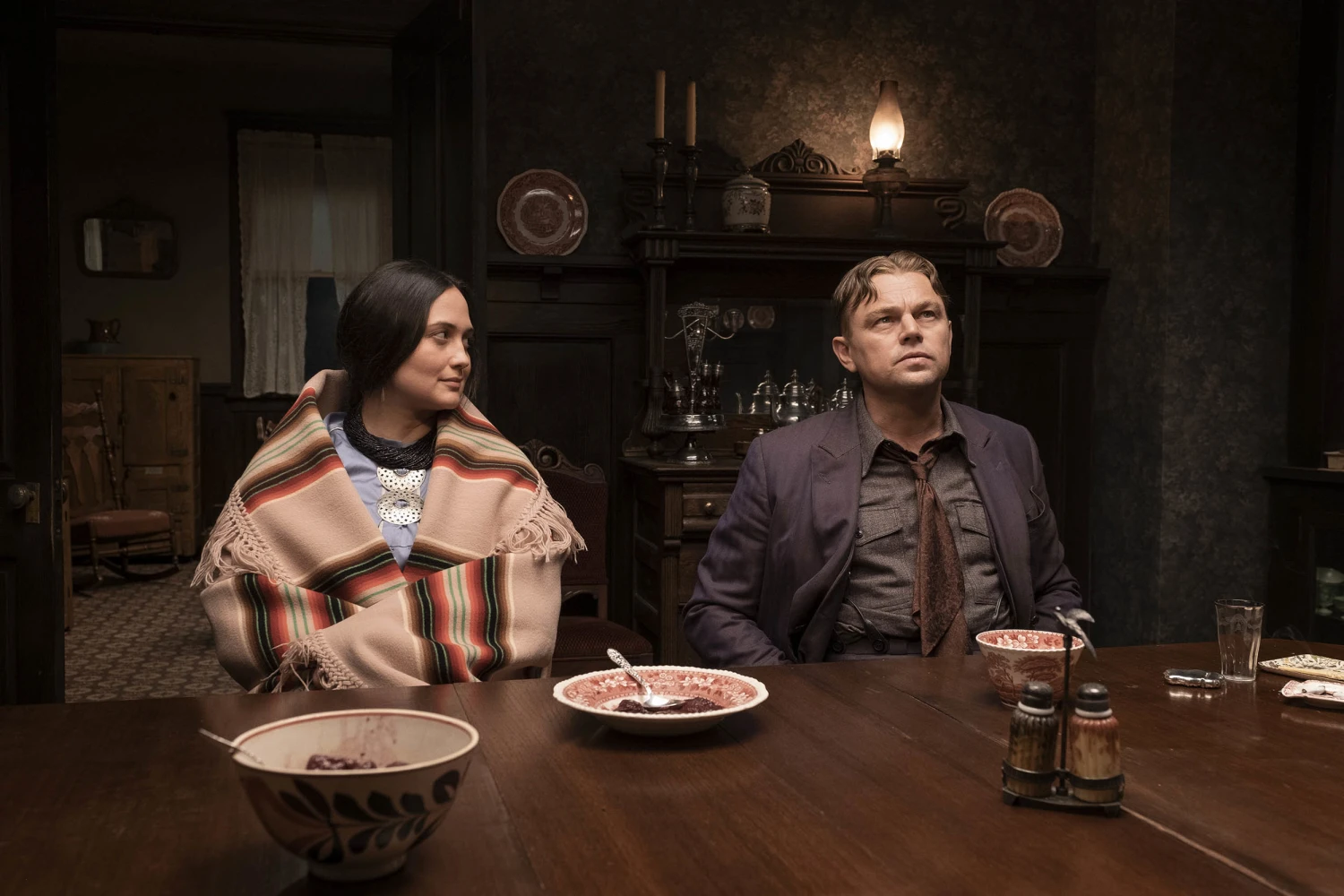As the credits rolled and applause filled the theater, the audience was left in awe after experiencing Killers of the Flower Moon, Martin Scorsese’s latest masterpiece. The film, lasting over three and a half hours, offers not just entertainment but a deeply spiritual experience for many.
For cinephiles, Scorsese stands as a saintly figure in the church of cinema, delivering not messages of salvation but rather meditations on humanity’s inner demons and moral decay. His storytelling invites viewers to confront uncomfortable truths about evil, greed, and complicity in history.
Based on David Grann’s nonfiction book, Killers of the Flower Moon recounts the horrifying Osage Indian murders of the 1920s. The Osage people, relocated to Oklahoma, discovered oil on their land and became extraordinarily wealthy. However, their prosperity attracted exploitation.
William “King” Hale, portrayed by Robert De Niro, poses as a friend of the Osage Nation while orchestrating a conspiracy to control their oil wealth. His nephew, Ernest Burkhart, played by Leonardo DiCaprio, marries Mollie, portrayed by Lily Gladstone, under Hale’s manipulation, leading to a deadly web of deceit and murder targeting her family.
Love Betrayal and Lies Reveal the Moral Collapse of Greed and Systemic Injustice
Ernest’s relationship with Mollie becomes the emotional center of the story. Torn between love and loyalty, Ernest assists his uncle in poisoning Mollie under the guise of medical treatment, slowly eroding her health. When Mollie travels to Washington, D.C., to seek federal intervention, an FBI investigation led by Tom White, played by Jesse Plemons, unravels the conspiracy.

The emotional climax occurs when Ernest confesses to the crimes but lies to Mollie about his full involvement, leading her to leave him. This betrayal signifies not just the collapse of a marriage but the moral disintegration of an entire system built on greed and racism.
The film’s final act shifts dramatically with a 1930s radio broadcast retelling the story as light entertainment. This creative choice exposes how white audiences historically consumed Indigenous suffering as spectacle. The broadcast mocks the Osage language and trivializes their pain, emphasizing how systemic racism extends even into cultural memory.
Scorsese’s on-screen appearance, delivering Mollie’s eulogy, marks a poignant moment of self-reflection. His trembling voice symbolizes an artist acknowledging his own complicity and urging audiences to confront the sanitized way history is often told.
Resilience Reflection and Reckoning in the Osage Legacy and Scorsese’s Call for Empathy
The closing Osage dance stands in sharp contrast to the preceding violence and exploitation. It represents cultural survival and resilience in the face of historical erasure. Scorsese’s decision to end the film with Osage voices reclaims narrative space from the colonizers who silenced them.
The film’s ending suggests that while non-Indigenous audiences have long consumed these stories as entertainment, true justice and healing require listening to Indigenous voices directly. The final fade to black is not closure but a reminder that the Osage story and Indigenous struggles more broadly continue beyond the screen.
Killers of the Flower Moon stands as both a historical epic and a moral reckoning. It challenges viewers to examine their roles as consumers of trauma and their responsibilities as witnesses to truth. Scorsese, often called the greatest living filmmaker, uses this story not to offer salvation but to demand reflection on storytelling, empathy, and accountability. For many, the experience of watching the film transcends cinema; it becomes a spiritual confrontation with history’s ghosts and a call to amplify the voices that have too long been silenced.



